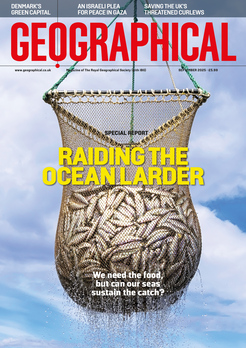
More than 160 ships stuck and cargo being offloaded as queues grow to get through vital global shipping link
Words by Stuart Butler
It’s one of the most important – strategically and economically – artificial waterways in the world. The Panama Canal slices through the middle of the Central American country of Panama to link the Atlantic with the Pacific Ocean. By using the canal, huge container ships are able to avoid a 15,000 nautical kilometre (8,000 mile) diversion around Cape Horn, at the southern tip of South America. Last year some 14,000 ships used the canal. For Panama, the canal is economically of huge importance, while for consumers around the world, the shorter shipping time translates into lower shelf prices.
One of the most impressive engineering feats of the canal is the series of locks that lift huge container ships up to the Gatun Lake, a large artificial lake that sits twenty-six metres above sea level. The locks work like those of any canal except that here, instead of gently raising a small leisure boat up to higher waters, these locks elevate some of the biggest cargo ships in the world, which can weigh thousands of tonnes.
For each large ship passing through the canal around 50 million gallons of water are needed to lift the boat up. Needless to say, such a system requires access to lots of water and because Panama is the world’s fifth wettest country that is normally not an issue. But in 2023 an unusual drought has meant that water has been in short supply.
Thanks to the impact of climate change and a strong El Niño period kicking into gear, Panama is now facing its second driest year since records began 143 years ago with rainfall measurements 30-50 per cent below average. And things are only expected to get worse, with experts predicting near-record low water levels by March or April 2024.


So far, the impact of the drought on the canal’s operating systems has meant that the canal authorities have already had to reduce the number of boats using the canal each day down from an average of 36 to 32 and what’s more, the weight of cargo the boats can carry has also been reduced by up to 40 per cent.
This has meant that some ships have had to offload containers which have then be transported overland by train, an action which entails more expense and time.
These restrictions have led to a traffic jam at the entrance to the canal with around 160 ships backed up and a wait time of up to three weeks to get a slot to pass through the canal. This giant waterborne traffic jam has already led to a 36 per cent rise in China-US spot shipping charges. And what’s more canal authorities believe that with water levels continuing to drop that things will get worse before they get better.




